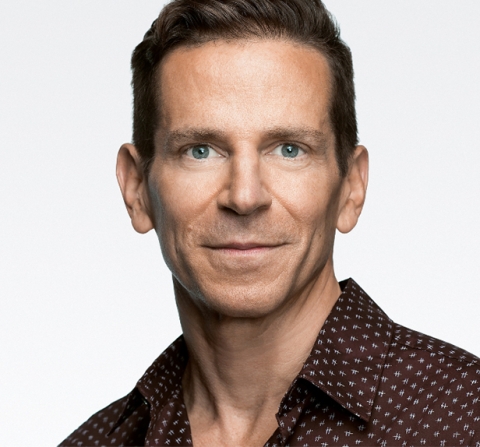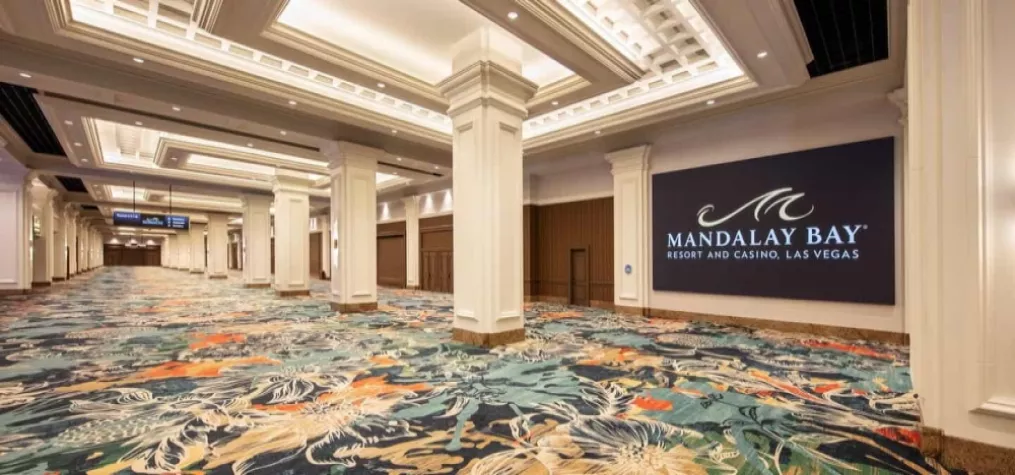How Experiential Marketing is Changing, According to Freeman CMO Chris Cavanaugh

In the past several years, C-level marketers across all industry segments have been putting more emphasis on — and budget toward — digital and experiential marketing, says Chris Cavanaugh, chief marketing officer at Freeman.
Freeman, once known as Freeman Decorating Services, has long been known for exhibition logistics management and has grown into an experiential marketing powerhouse. According to the recent Ad Age Annual Agency report, which gives Freeman strong rankings, the experiential marketing category grew 2.1 percent in the U.S. over the past year, outpacing the “all marketing disciplines” growth rate of 1.7 percent.
Cavanaugh has been with Freeman for seven years. Before taking on the CMO role in 2015, he was brought on to build FreemanXP, a brand experience agency within the greater Freeman organization. Prior to that, he spent 16 years at Jack Morton Worldwide.
We spoke with Cavanaugh about marketing trends, experiential marketing and Freeman’s work within this space.
Danalynne Wheeler Menegus: What do you see as the primary value proposition for experiential marketing?
Chris Cavanaugh: Things happen in a large setting that cannot happen in other marketing media. The experiential component is typically that last mile where you can take interested, engaged audiences in online settings and bring them into a real-life setting. It allows you to dimensionalize your brand and connect with people in ways that you can only do in a live setting. As much as we're all living on our devices, we still crave the ability to get together with people who have shared interests and similar passions.
DWM: What are you most passionate about when it comes to experiential marketing?
CC: Experience design. The idea of design thinking is to put the attendee or customer at the center of the proposition. That means building experiences around what they want or need out of the program instead of what we want them to do, or what we think they want. It’s easy to get caught up in the logistics of mounting these experiences and/or the pressures around budget, and sometimes design takes a back seat.
DWM: How does someone newer to this concept know where to start?
CC: It doesn't have to be highly sophisticated. It’s a heart-and-mind sort of thing with experiences. You have to feel like these events are intellectually stimulating and you're bringing something back with you, but they also have to tell a story with a narrative that attendees care about. People want to connect in meaningful ways with these companies and these stories, so you can’t forget the story. Live experiences are a valuable part of an integrated marketing mix, and getting people together in real-life settings is a great way to continue to build relationships.
DWM: What changes have you seen in the past decade?
CC: The maturation of brand experience as a marketing channel. More marketers now understand the concept of the customer journey. You have to look at every touch point from beginning to end, whether the marketing organization owns it or not, to ask: Is it cohesive? Is it telling a single story? Is it making it easier for customers to interact with our brand to get what they want and find what they need?
Also, as experiential marketing becomes more recognized as a legitimate marketing channel, clients are bringing Freeman into the conversation earlier. We’ve built out a robust brand strategy and brand experience practice, especially in the last three or four years, because our clients are asking for it. Most of our clients now want to add brand experiences into their overall marketing mix and want a company that can help them do that for their audiences all around the world. They're bringing us into these higher-level discussions, and we're bringing people to the table who can help them have those strategic conversations internally.
DWM: How do you continue to scale while providing personalized programs?
CC: A majority of Freeman’s business is small- to medium-sized programs. We create and/or produce in the realm of 30,000 programs of modest scale each year; this helps us develop best practices that we can effectively templatize, allowing us to offer new thinking to folks that have limited resources and limited budgets. Our teams work together to come up with creative ideas that are scalable.
We spend a lot of time thinking about audience segments and creating content for all the audiences we speak to, from data reports and metrics to a stat-pack around the value of brand experience. So as our clients are looking to validate the value of the programs that they create, they have additional resources from us.
DWM: Does that extend internally as well as externally?
CC: We're constantly looking across all of our own touch points internally as well, to figure out where and how we can improve the experience. Where can we automate to make it simpler, easier, faster and more intuitive? How do we ultimately bring AI into it so that it's more self-serve, more predictive and more personalized? When you interact with our brand in real life, do we remember who you are and what your preferences are, and are we helping you get to where you need to be across all channels?
DWM: As a company that works with clients holding events around the world, what differences do you see in marketing from region to region?
CC: In many Asian markets, marketing is approached differently. B2B and B2C start to blend together. In North America, we still think of B2B marketing programs in a distinct way, but our customers in the U.S. are getting used to the idea that all audiences are basically consumers: They want and need highly interactive, highly engaged experiences.
For us, it’s about creating consistent, culturally relevant experiences across geographies more than just one-off events, connecting them together to build audiences around the world. The regional brand experience strategy ties back to the bigger marketing strategy.
DWM: What are your predictions for event marketing over the next decade?
CC: Live experiences will continue to become more hyper-personalized. People coming to these programs will expect a personal journey, even (and maybe especially) if they are going to a conference with thousands of attendees. They will expect that journey to be generated in an intuitive way that can be accessed through a smart device or ultimately through biometrics. When you walk into a room, you’ll get the content you’re looking for in the environment that works best for you. The back end will be informed by data and technology, while the front end will create a more meaningful, connected experience. That’s the continuation of this blurring of the lines between B2B and B2C.
Don’t miss any event-related news: Sign up for our weekly e-newsletter HERE and engage with us on Twitter, Facebook, LinkedIn and Instagram!


Add new comment